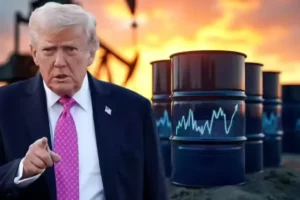India Iron Ore Export Duty: Govt Warns Industry Ahead of Oct 2
thenewsbuzz September 15, 2025 3
India Iron Ore Export Duty: India’s iron ore sector is in the firing line. As the government has laid down a clear ultimatum; increase production, and reduce prices by October 2. An export duty will loom large on the horizon, potentially an entire export ban. This is all part of the Centre’s attempts to maintain competitiveness in the domestic steel industry while the domestic demand is tightening.
The action has already been a catalyst for lively conversations amongst ministries, industry associations and steel makers. This makes it potentially one of the most watched changes in the mining and steel industry in India so far. This story will point to a significant shift in India’s commerce and industry plans.
Iron Ore Output and Deficit
India has the environmental clearance (EC) capacity of over 200 million tonnes per year. Its actual iron ore output is nearly half of that. The output for FY25 totalled 290 million tonnes. Out of this only 253 million tonnes was used for crude steel production. There’s approximately 24 million tonnes of iron ore left which essentially accounts for 13-14 million tonnes of surplus.
However, for FY25, nearly 30 million tonnes of iron ore was exported. This is relatively low when compared to FY24 levels.
The government is worried that if immediate corrective action is not taken, India’s balance of iron ore supply and demand may threaten its ambitions for increased steel production.
Regulations Imposed By the Authorities
At a senior level review meeting, the minister made specific stipulations:
- To increase domestic iron ore production.
- Prices must be reduced to 50% of current price levels.
- Increase steel exports to 50 million tonnes.
If these stipulations are not met, there is a risk of an export tax on low-grade iron ore (58% Fe or less). It was initially recommended that this be in the range of 10–20%. If there is continued concern export ban in totality may also be applied.
Focus on Odisha and Government-Operated Miners
Odisha has been singled out due to excessive restrictions and approval timelines.
PSU’s (e.g. NMDC and SAIL) were ordered to cede leased but unused mines to auction to the new entrants.
Currently there are 179 captive mines currently in operations. However production is still below expectations. In the total EC capacity of 203.112 MTPA less than half of that total, 116.55 MTPA, is in production. And in 27 capacities auctioned from the relevant authority context to date potentially less than half has been implemented.
Pricing and Policy Review
The government intends to make fundamental amendments to the pricing structure.
The Indian Bureau of Mines (IBM) will be tasked with establishing average sale prices for every grade of iron ore in the next few weeks. Auction premiums might be restricted and prepayments could be a substitute for long term commitments in order to create predictability for miners and buyers.

Concerns and Push Back from the Industry
Steel manufacturers argue that high iron ore prices render their products less competitive against Chinese exports. Miners, on the other hand, stress that high auction premiums and unpredictable policy deter investment. Many beneficiation plants are idle because they don’t have enough feed to exploit capacity and concerns have heightened regarding blending approaches that aren’t concerned about ore quality.
The Federation of Indian Mineral Industries (FIMI) has contested the enforcement of an export duty and cited worries over stockpiling inexperienced fines risks associated with inefficiencies in the environment. Meanwhile, Goa’s mineral exporters have sought exemptions arguing that their ores are unsuitable for local production of steel and account for less than 5% of the national market.
The October 2 deadline set by the Centre means that miners and steel producers have a limited time to alter business practices. The government could impose taxes or restrictions, significantly changing the landscape of iron ore exports from India, if the increase in production isn’t kept up and domestic prices remain high.
For companies and investors paying attention to latest news on business, this dispatch serves as a reminder of how policy changes in industries like mining and steel can influence so much in an economy in terms of industrial competitiveness and positioning for global trade.







ikrzhq
njld6h
Your article helped me a lot, is there any more related content? Thanks!